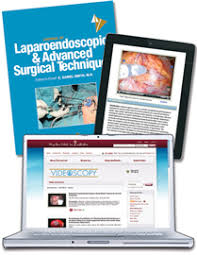Perry KA, Linn JG, Eakin JL, Onders RP, Velanovich V, Melvin WS
J Laparoendosc Adv Surg Tech A. 2013 May;23(5):456-8.
INTRODUCTION:
Transoral incisionless fundoplication (TIF) has been used for endoscopic treatment of gastroesophageal reflux disease (GERD). Full-thickness polypropylene H-fasteners create a serosa-to-serosa gastroesophageal plication. A certain subset of TIF patients will require subsequent antireflux surgery to achieve adequate reflux control, and it is unknown whether this procedure increases the technical difficulty of laparoscopic Nissen fundoplication for recurrent GERD.
PATIENTS AND METHODS:
Between 2008 and 2010, patients demonstrating objective evidence of recurrent gastroesophageal reflux following TIF using the Esophyx device (Endogastric Solutions, Redmond, WA) underwent laparoscopic Nissen fundoplication. The study end points included operative time, operative blood loss, gastric or esophageal perforation, and length of hospital stay.
RESULTS:
In total, 7 patients underwent laparoscopic Nissen fundoplication for recurrent GERD at a median interval of 7 (range, 3-28) months after TIF. Revisional fundoplication required 97 (range, 48-122) minutes and was performed in all cases with minimal blood loss. There were no cases of esophageal or gastric perforation during the dissection of the previous fundoplication. A significant hiatal hernia was noted during 1 case, and all others revealed partially disrupted gastroesophageal fundoplications with visible dislodged polypropylene H-fasteners visible. All patients were discharged from the hospital on the first postoperative day.
CONCLUSIONS:
Severe recurrent gastroesophageal reflux necessitating laparoscopic Nissen fundoplication occurs in a subset of patients following TIF. In this series, previous TIF did not result in prolonged operative times, significant operative hemorrhage, or iatrogenic hollow viscus injury. These data suggest that laparoscopic Nissen fundoplication can be safely performed in this patient population without increased operative morbidity.
Link to abstract on PubMed: Perry KA, et al; J Laparoendosc Adv Surg Tech A. 2013 May;23(5):456-8.


